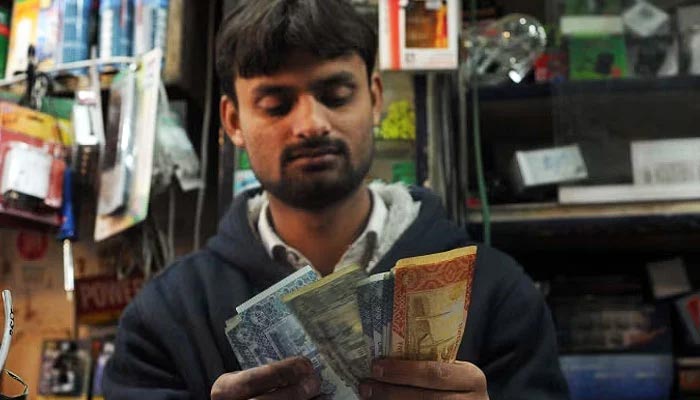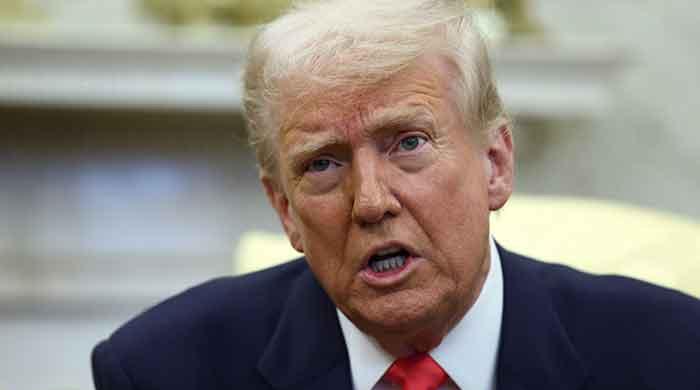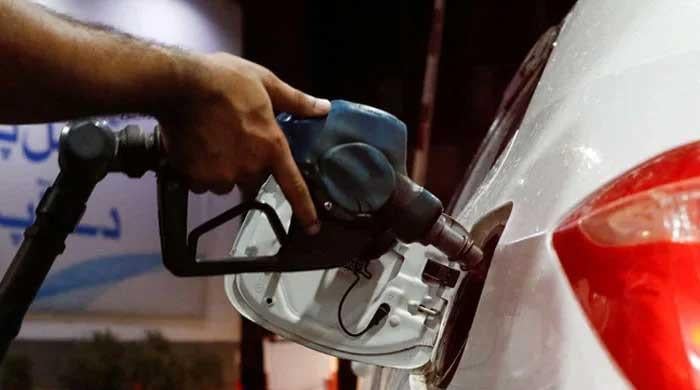Rupee may face pressure amid IMF's bailout uncertainty
Govt is exploring various options to bridge external financing gap, crucial for approval for $7bn IMF loan, says Tresmark
September 08, 2024

- Rupee expected to exceed 279 per dollar.
- Rollovers pose challenge for government.
- Rupee witnesses fluctuations this week.
KARACHI: The Pakistani rupee is anticipated to face pressure, potentially exceeding 279 per dollar due to uncertainties surrounding the International Monetary Fund’s (IMF) loan programme, a report said on Saturday.
The government is exploring various options to bridge the external financing gap, crucial to obtaining final approval for a $7 billion loan from the IMF.
Rollovers pose a significant challenge for the government. In addition to ongoing negotiations with bilateral partners, the government is actively seeking commercial loans from international banks and investors.
The finance minister is tasked with a difficult job of closing the funding gap at favourable rates within a limited timeframe to ensure timely approval from the IMF board. Although the government is still optimistic that funding can be obtained soon, any further delays in the loan programme could cause financial markets to become uneasy.
The rupee witnessed some fluctuations in the interbank market this week. On Monday, the local currency finished at 278.64 per dollar; on Wednesday, it ended at 278.76 after further declines. On Friday, though, it gained momentum and closed at 278.56 to the dollar.
“The rupee will benefit from the 9% drop in oil with Brent trading around the $71 level,” said Tresmark in a client note.
“Going forward, the outlook looks stable for the rupee but its likeliness of breaching 279/$ at any point has increased due to uncertainty around the IMF programme. For now, forward selling by exporters has slowed down to a trickle,” it added.
The decision to keep the rupee stable is still omnipresent. So even though there has been significant buying pressure last week, the rupee remained range-bound, according to the report.
“Liquidity in the interbank was slightly more squeezed than last week and resulted with swap premiums in the shorter range (1 week) trending around 14 per cent versus premiums in the medium tenors (3 months) trending around 8.0 per cent,” it said.
In the State Bank of Pakistan’s next monetary policy meeting on September 12 (Thursday), traders are expecting a 100-200 basis point interest rate drop due to a notable decline in inflation.
In August, inflation fell to a single digit of 9.6%, resulting in a real interest rate of 1,000bps, which creates room for further rate cuts.
Some variables, like the sluggish economy and below-target tax collection, may prevent the SBP’s Monetary Policy Committee from delivering a bigger rate cut next week. Fiscal space is more and more crowded out as borrowing increases.
“Fears of dollarisation if interest rates go down too quickly will resurface. Already there is an outflow of more than $78 million of hot money, primarily from T-bills, during the first 15 days of August,” Tresmark’s report said.
Questions on the IMF programme have been rekindled. This will have a significant weight on MPC members when deciding on the size of the rate cut, it said.
“Recession risk in the US has never been higher and asset contagion is inevitable. This is the message of the 10-year US Treasury note yield at 3.74% and ominous re-steepening of the 2-10 yield curve,” it said.
Add to this, the potential risk emanating from US elections in November when many a policy will be revisited, it added.
“Traders are apprehensive of a plan to change currency notes where extensive bundles of notes under the bed will be exchanged for assets in the form of gold and dollars — both of which are trending higher in parallel markets. The dollar in grey market is trading at 285.”
Originally published in The News











